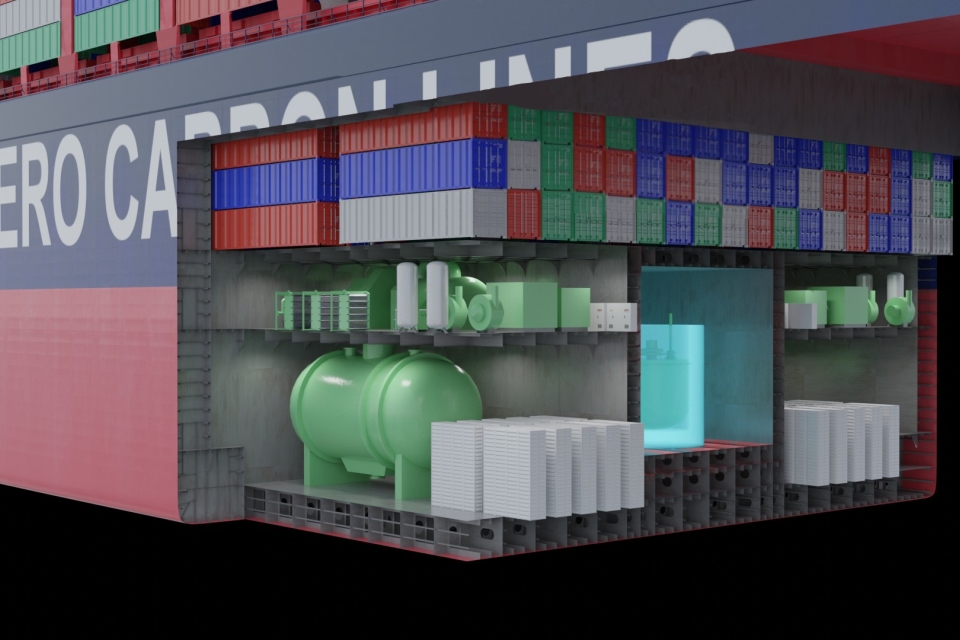ABS and Herbert Engineering Corp. (HEC) have modelled the transformational impact of nuclear propulsion on the design, operation and emissions of a 14,000-TEU container vessel and a 157,000-DWT Suezmax tanker. According to ABS, a net-zero world is more easily realised through nuclear propulsion.
ABS commissioned HEC to carry out the study to explore the potential of advanced modern reactor technology for commercial marine propulsion. The study is designed to help industry better understand the feasibility and safety implications of nuclear propulsion and to support future development projects.
Also read: Nuclear energy – From perception to reality
Refuelling only once or not at all
The study, which involved input from leading nuclear reactor developers, modelled the impact of two, lead-cooled, 30-MW fast reactors on the container carrier, finding it would likely increase cargo capacity and operational speed, while eliminating the need for refuelling during its entire 25-year lifespan.
On the Suezmax vessel, the study found the addition of four, 5-MW, heat-pipe microreactors, while decreasing cargo capacity, would raise operational speeds and only require refuelling once during its 25-year life. Both concept vessels would emit zero CO2.
‘Our findings from this latest cutting-edge research underscore why the industry cannot afford to ignore the vast potential offered by nuclear propulsion both in terms of emissions reduction and operational efficiency,’ says Christopher J. Wiernicki, ABS Chairman and CEO. ‘A net-zero world is more easily realised through nuclear propulsion, and we are putting in place the foundations for that future today. Turning this into a practical reality will require significant public sector support.’
Also read: How nuclear power can be used on ships safely
Laser focus on safety
He adds: ‘Advanced or small modular reactors address many of the issues traditionally associated with nuclear for commercial maritime use, with enhanced safety and efficiency, reduced cost and waste and proliferation prevention. Nevertheless, many questions need to be answered and it is critical that industry evaluate these technologies with a laser focus on safety.’
‘HEC is pleased to be able to support ABS and explore the practical application of nuclear power on board,’ concludes Robert Tagg, Senior Principal Naval Architect at HEC. ‘This study is helping us to understand in detail both the potential of modern reactor technology and how this will affect the design and operation of future vessels.’
Recently, the US Department of Energy (DOE) awarded ABS a contract to research barriers to the adoption of advanced nuclear propulsion on commercial vessels. The DOE has also contracted ABS to support research into thermal-electric integration of a nuclear propulsion system on a commercial vessel being carried out by the University of Texas.
Picture: Concept design showing the arrangement of nuclear reactor and supporting equipment.
Also read: ABS and HD Hyundai step up autonomous sailing projects








